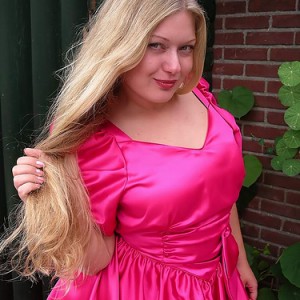
In my last post I described the relatively common phenomenon of telogen effluvium, where growth cycles of the hair follicles synchronize, resulting in extreme shedding and an abundance of clogged shower drains. The sheer volume of hair loss can be frightening and upsetting, as well as tough on your vacuum cleaner. Fortunately, as difficult as the process is, the hair does grow back.
So what causes telogen effluvium and how do we avoid it completely? As mentioned last time, pregnancy hormones are a known instigator, but there are also many other suspected triggers. Stress, illness, pharmaceuticals, our own hair growth patterns and seasonal changes can all impact shedding.
Stress, illness and pharmaceuticals have all been suspected causes of “immediate anagen release”1. What happens is a large number of hair follicles which had been actively growing suddenly revert to a resting phase. It takes about 2 or 3 months, but all of that hair falls out at once.
Pharmaceuticals can also cause “immediate telogen release”2. Almost the reverse of immediate anagen release, starting a new medication such as minoxidil can encourage new hair growth. Non-growing hairs originating from follicles in a resting phase are released to make way for new hair growth as the follicles switch to an active growing phase.
Chronic telogen effluvium combined with an inability to grow longer hair is normally caused by “short anagen syndrome”3. In this case, for whatever reason, the growth phase of the hair cycle is consistently short. That means the hair follicles are entering the resting and shedding phases relatively more often than usual, therefore shedding is happening more often than usual.
Although it’s most often associated with animals, there are also reports of seasonal shedding in people1. If you have ever shed your winter or summer hairstyle, it may have been a result of “delayed telogen release”. The hair follicles remain in the resting phase for extended periods of time before returning to the growing phase.
As mentioned above, as frustrating (or scary) as it is at the time of shedding, in the case of telogen effluvium, the hair does grow back. A disruption in the hair cycle occurs but it does not result in permanent hair loss as is the case for pattern hair loss and similar conditions. Additionally, see your hair loss specialist for any further questions.
Article by: Dr. J.L. Carviel PhD, Mediprobe Research Inc.
References
- Headington JT. Telogen Effluvium: New Concepts and Review. Arch Dermatol 1993;129:356.
- Grover C, Khurana A. Telogen effluvium. Indian J Dermatol Venereol Leprol 2013;79:591–603.
- Gilmore S, Sinclair R. Chronic telogen effluvium is due to a reduction in the variance of anagen duration. Australas J Dermatol 2010;51:163–7.












